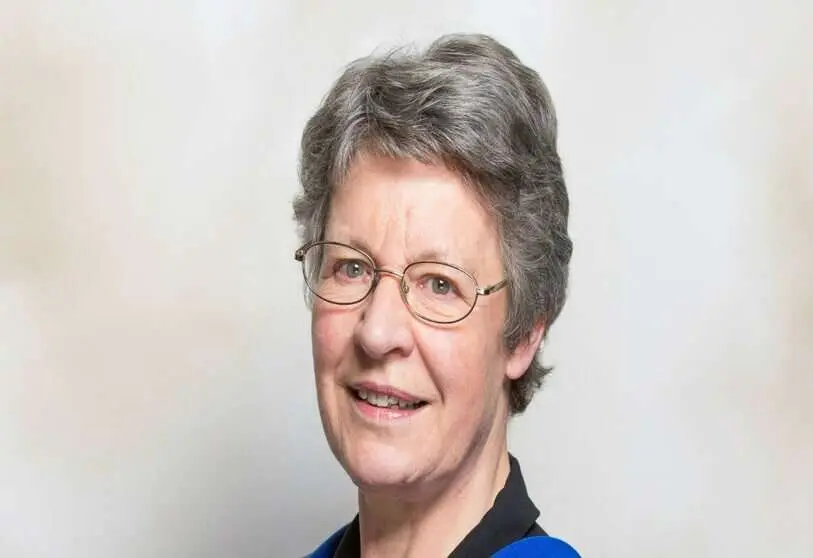Jocelyn Bell will tell CosmoCaixa how she discovered pulsars, one of the most important discoveries in physics

On 8 November at 7 p.m. at the CosmoCaixa Science Museum, the "la Caixa" Foundation presents the lecture "The discovery of pulsars. The story of a PhD student", by Jocelyn Bell Burnell, PhD in Physics from the University of Cambridge, professor and researcher at major prestigious universities.
This conference is organised by the "la Caixa" Foundation and is being held within the framework of the European Space Agency (ESA) congress, in connection with "The Extreme Universe" and the Athena X-ray Observatory project.
Bell will give an overview of the history of one of the most important discoveries in physics: pulsars or, in other words, neutron stars. Nanda Rea, astrophysicist at the Spanish National Research Council (CSIC) and the Institute for Space Studies of Catalonia (IEEC), will be responsible for moderating the session.
The physics expert will recount the moment when, while observing distant objects in other galaxies with a radio telescope, she perceived a strange signal that repeated every 1.3 seconds. After studying that part of the sky for days and nights, analysing hundreds of graphs and seeing that the signal was constantly repeating, she knew that she had discovered the first neutron star.
Pulsars, a fascinating phenomenon
Studies indicate that a pulsar is a small neutron star rotating at high speed. The best known is in the Crab nebula. A neutron star is the remnant left over after a massive supergiant star goes extinct. Pulsars emit a large amount of energy. Their density is so great that, in them, matter the size of a ball of a biro has a mass of about 100 000 tonnes. Neutron stars emit such periodic (or pulsar) radiation at short, regular intervals.
Since their discovery, pulsars continue to surprise us, not only as interesting objects for astrophysics (we now know of the existence of 3,000 of them in our galaxy), but also because of their value for studying nuclear physics and cosmic rays, or for detecting gravitational waves. This galactic phenomenon could even become our GPS in the not too distant future.
In this session, Bell will reveal the secrets of the most magnetic and dense objects in the universe. A great opportunity to learn more about space, stars and pulsars, and to debate in person with a great scientist.

This session is the fourth in the series Great figures in science, which the "la Caixa" Foundation has been organising since May at the CosmoCaixa Science Museum with illustrious personalities in science who have reached great milestones or who have made exceptional discoveries for humanity. This initiative has already been visited by the Nobel Prize winners in Physics Michel Mayor and Serge Haroche, and the popular NASA astronaut Terry Virts.
In each of the sessions, visitors to the museum can explore the most relevant and fascinating aspects of contemporary science, thanks to the best scientists of today. In this way, viewers can learn about extraordinary contributions and discoveries from the experts themselves, as well as ask them any questions they may have. This is a unique opportunity to access knowledge about the universe and our planet, about matter and life, about evolution or about any other study that helps us to answer the great questions of science, guided by its greatest protagonists.
CONFERENCE
Monday 8 November 2022, at 7 p.m. The discovery of pulsars. The story of a PhD student, with Jocelyn Bell
BIOGRAPHY OF JOCELYN BELL
Jocelyn Bell Burnell holds a PhD in Physics from the University of Cambridge. She has been a lecturer and researcher at major universities and prestigious institutions, including the University of Southampton, University College London, the Royal Observatory of Edinburgh, the Open University, the James Clerk Maxwell Telescope at Mauna Kea in Hawaii, Princeton University, and is Dean of Science at the University of Bath and President of the Royal Astronomical Society. She has won numerous awards and is currently a visiting professor of astrophysics at Oxford University.
About her research
Pulsars were discovered in 1967 by Jocelyn Bell and Anthony Hewish at the Cambridge Radio Astronomy Observatory. Many pulsating stars are known, but only two, the Crab pulsar and the Vela pulsar, emit detectable visible pulses. These two are also known to emit gamma-ray pulses, and one, the Crab pulsar, also emits X-ray pulses. For this important discovery, the Nobel Prize in Physics was awarded in 1974; however, Bell was not one of the recipients of the prize.
Moderator:
Nanda Rea, astrophysicist. She works as a staff scientist at the Consejo Superior de Investigaciones Científicas (CSIC) and at the Institut d'Estudis Espacials de Catalunya (IEEC). She is part of the Athena scientific study team at the European Space Agency (ESA).







